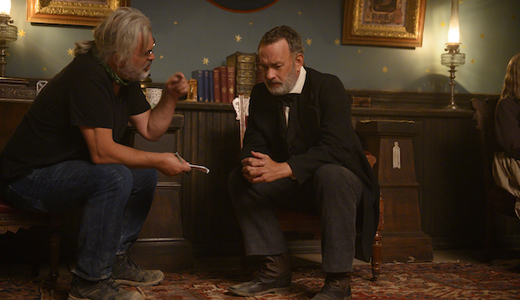Director Paul Greengrass has made, by his own admission, some difficult movies—often based on real events. United 93 (for which he was nominated for an Oscar) tackled 9/11. Captain Phillips dramatized the Maersk Alabama hijacking by Somali pirates. His 2018 film, 22 July, revisited the horrific 2011 massacre in Norway, in which extremist Anders Behring Breivik killed 77 people.
After 22 July, though, Greengrass was looking for something different. Instead of delving into the world’s divisions, he wanted to find a way out of them.
“You look to your children and you think, ‘We need the world to be less divided if they’re going to have a future,’” he said during a recent roundtable interview, in which Plugged In took part. “And so that’s why I made this film. I wanted it to be a family film. I wanted it to be my family film. I’ve done some pretty tough films over the years [about some] pretty difficult subjects. But I wanted to make a film about hope and about what the road out of this feels like.”
That “road out” led to a road movie of sorts—one titled News of the World, based on the 2016 novel by Paulette Jiles. It’s the story of an old, grizzled man named Captain Kidd (played by Tom Hanks), who travels the dusty roads of Texas in 1871, reading the news in small towns along the way.
But Kidd’s own planned story—that of traveling around Texas alone, reading the news in dusty town squares and old barns at a time ahead—gets a hiccup. He comes across a girl who’s been twice orphaned: first when Kiowas attacked her mostly German settlement, killed her parents and kidnapped her; then a second time six years later, when the Cavalry attacked the Kiowas who, by that time, she thought of as family. Someone had been taking her back to her nearest kin, but that someone was dead now. Now it’s up to Kidd to finish the job.
Greengrass was attracted to Jiles’ novel for many reasons. But ultimately, he says, it wasbecause he saw the story as one of healing. The girl, Johanna (played by Helena Zengel), is a girl without a home. Captain Kidd is homeless and hurting, too, still suffering from the aftermath of the Civil War. They have nothing in common: At first, they can’t even speak to each other, because Johanna doesn’t know English and Kidd doesn’t speak Kiowa. But eventually, they find a sort of home together, all without leaving the road.
“I like that the film is quite gentle in parts, because it makes you think of better days to come,” Greengrass says. He adds that, in a time filled with such strong fractures and bitter divisions, of pandemics and political unrest, that sort of story is “what the world needs right now.”
He acknowledges that the film takes place in a divisive time, much like our own—filled with political tension and frightening technology and even, as it turns out, fake news. That’s no accident he hopes that this story, which takes place 150 years ago, has some relevance today. But he insists that no story should start out that way.
“You never make a good movie if you start by thinking about what you want the audience to think about, you know what I mean?” He said. “That’s not how you do it. … Ultimately, you have to think of a movie as an entertainment. Something that people are going to give you the privilege of a couple of hours of their time. And you want them to feel, at the end of it, that they’ve been entertained.”
He was attracted to the story, in part, because he sees Kidd in himself—or himself in Kidd. They are both, after all, storytellers.
“He’s trying in his way to heal,” Greengrass says. “By the healing power of storytelling.”
Greengrass believes in that healing power. “We’re a storytelling animal,” he says. “We tell stories around the family dinner table. Outside in cafes and bars. In the theaters and movie theaters. On the television screens. Our stories bind us together.”
Greengrass is also drawn, often, to ordinary men called to do extraordinary things. “It’s the reverse of a superhero, I guess,” Greengrass says. “And that’s something that I think we all secretly wonder about. How would it be if we were called upon in some great crisis.” He says the pandemic has given many of us an opportunity to be heroes in our own small ways to the people around us. We’re helping our parents and our children cope, and doing our best to keep them safe.
“We want to draw family close at a time like this as best as we can and see if we can’t get through this tremendous period of difficulty,” he says. “It’s a natural thing to draw your family close and hope for better days to come.”
He talked again of his desire to make a “family film,” one that his own family (he has three daughters and two sons, most of whom are grown) could watch together.
“I found myself dwelling on ‘Is it going to be OK for them?’ Out in the world in a time when the world is bitterly divided, and seemingly, for them, lacking the hope that I had when I was their age. … There’s a lot of stress [surrounding] young people, I think, and the pandemic’s only made that worse.”
“This story,” he adds, “Is really about two characters who are both lost, but found their way. And so that’s why I thought, ‘It’ll be my family movie.’”
News of the World is playing in theaters now. And if it’s not exactly a film for the whole family, Greengrass is right: There is encouragement viewers can pluck from it. Check out our full review here.







Recent Comments